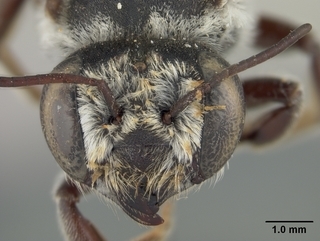
Smithsonian Institution, Entomology Department · 9
Megachile albitarsis, female, face |
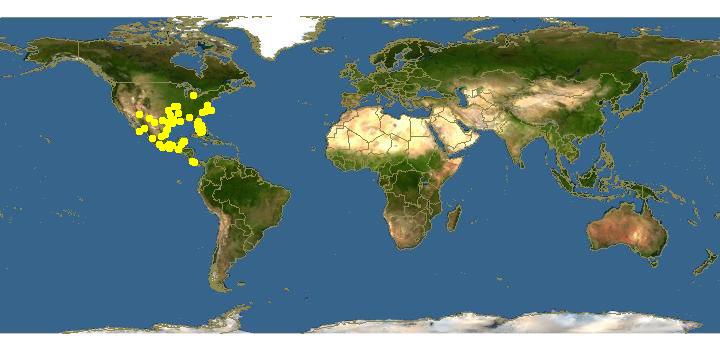
Click on map for details about points.
|
| Links | - Hosts
We parsed the following live from the Web into this page. Such content is managed by its original site and not cached on Discover Life. Please send feedback and corrections directly to the source. See original regarding copyrights and terms of use.
- Sean McCann, BugGuide, bugguide.net
|
80x5 -
240x3 -
240x4 -
320x1 -
320x2 -
320x3 -
640x1 -
640x2
Set display option above.
Click on
images to enlarge. |
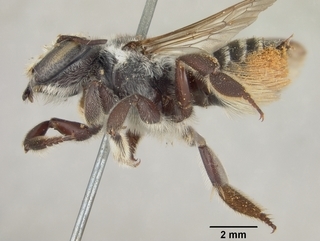
Smithsonian Institution, Entomology Department · 9
Megachile albitarsis, female, side |
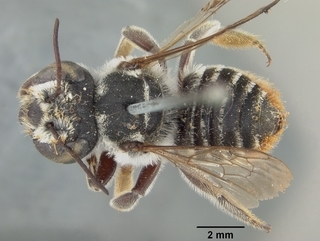
Smithsonian Institution, Entomology Department · 9
Megachile albitarsis, female, top |
|
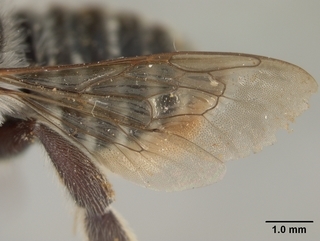
Smithsonian Institution, Entomology Department · 9
Megachile albitarsis, female, wing |
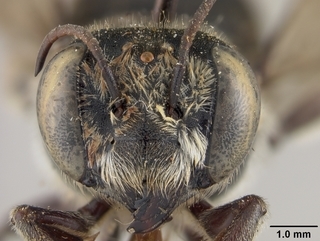
Smithsonian Institution, Entomology Department · 9
Megachile albitarsis, female, face |
|
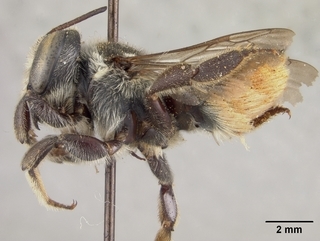
Smithsonian Institution, Entomology Department · 9
Megachile albitarsis, female, side |
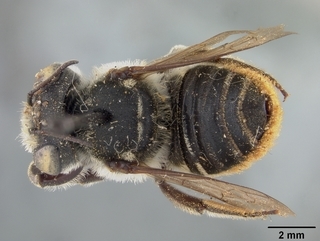
Smithsonian Institution, Entomology Department · 9
Megachile albitarsis, female, top |
|
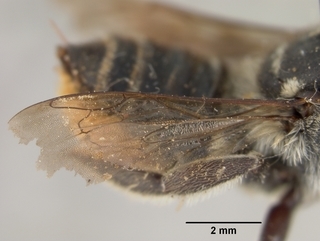
Smithsonian Institution, Entomology Department · 9
Megachile albitarsis, female, wing |
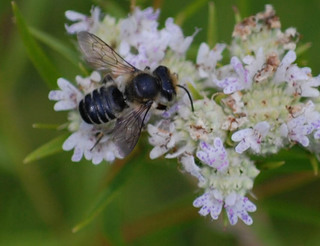
© Copyright Sheryl Pollock 2011
· 1
Megachile mendica, leaf-cutter bee |
|
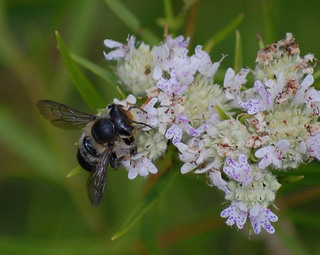
© Copyright Sheryl Pollock 2011
· 1
Megachile, leaf-cutter bee |
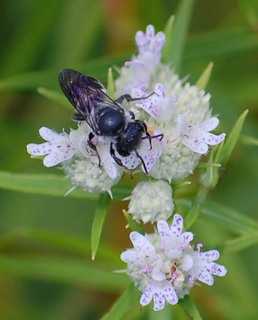
© Copyright Sheryl Pollock 2011
· 1
Megachile, leaf-cutter bee |
|
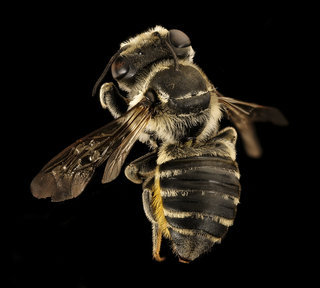
© Copyright source/photographer
· 5
Megachile albitarsis, f, back, Chambers co, Texas |
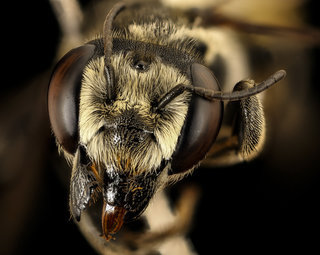
© Copyright source/photographer
· 5
Megachile albitarsis, f, face, chambers co, Texas |
|
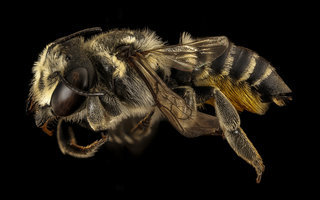
© Copyright source/photographer
· 5
Megachile albitarsis, f, side, Chambers co, Texas |
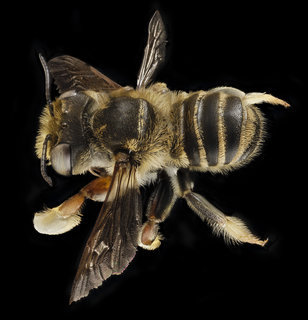
© Copyright source/photographer
· 5
Megachile albitarsis, M, Back, FL, Torreya |
|
Overview |
Reprinted with permission from: Mitchell, T.B. 1962 Bees of the Eastern United States. North Carolina Agricultural Experiment Station Technical Bulletin No. 152.
FEMALE�Length 12-13 mm.; entirely black, including tegulae and legs, spurs pale yellow; eyes subparallel; clypeal margin medially with three small but distinct tubercles; mandibles broad apically, obscurely 4-dentate, the two median teeth broadly truncate, a bevelled edge between these and the inner tooth (fig. 53) ; lateral ocelli slightly nearer margin of vertex than to eyes; cheeks sub- equal to eyes in width; punctures of vertex deep and distinct but rather fine, slightly more sparse and coarse medially and between lateral ocelli, somewhat finer and much closer on each side, more shallow and obscure on cheeks, becoming quite sparse below; face below ocelli quite densely rugose, clypeus and supraclypeal area with some evident but narrow, shining spaces medially, punctures becoming close on each side; pubescence white, rather short but quite copious below ocelli, around antennae, on cheeks and on elypeus laterally, becoming rather elongate on cheeks below, thin and short above, clypeus with more elongate and erect but thin yellowish pubescence, that between ocelli and across vertex short and black;pubescence of thorax entirely pale laterally andposteriorly, rather short but quite dense on pleura, with dense white tufts back of tuberdes and just behind wing bases, scutum and scutellum with short, erect, generally black pubescence, becoming somewhat whitish on scutum anteriorly, with a pair of narrow, slightly oblique, tomentose lines, a dense tomentose spot behind each tegulae, and a line of tomentum in the scutello-mesothoracic suture; scutum, scutellum and axillae finely and densely punctate throughout, with no shining spaces evident, punctures of pleura close, somewhat coarser below, becoming somewhat finer and densely crowded above; propodeum somewhat shining laterally, with vague obscure punctures, posterior face with rather numerous, irregular, minute punctures; hind basitarsi fully as broad and nearly as long as their tibiae; mid basitarsi fully as broad as the tibiae but definitely shorter, the apical, anterior angle somewhat produced, following segments narrow at base, broadly dilated apically, with the anterior angle somewhat prolonged; tegulae minutely and quite closely punctate; wings subhyaline, veins brownishpiceous; abdominal terga 2 and 3 quite deeply grooved across base, basal margin of the grooves distinct but not carinate, 4 and 5 shallowly depressed toward base but without a definite, basal margin, apical margins of terga rather narrowly depressed, more deeply so on the more apical terga, with quite dense, entire, pale tomentose fasciae; tergum 1 with quite copious, long and erect, whitish pubescence, becoming dense at extreme sides, discs of 2-5 with very short but definitely black pubescence; tergal punctures fine and close throughout; tergum 6 straight in profile, with no erect pubescence evident, but with erect black hairs toward base visible in dorsal view, surface otherwise finely greyish tomentose,
punctures extremely minute and densely crowded except at extreme sides toward base; sternum 6 with a row of elongate hairs across the base, but bare from this to the subapical fringe of very short, brownish hairs, a narrow, rounded lip projecting slightly beyond this fringe; scopa white, the sterna closely and rather deeply punctate, close on the more basal sterna, becoming somewhat more widely spaced apically, apical margins of the plates narrowly hyaline; no sternal fasciae evident.
MALE�Length 11-12 mm.; black, tarsi bright yellow, tibiae more testaceous, and tegulae yellowish-hyaline; eyes slightly convergent below; clypeal margin medially with three small but distinct tubercles beneath dense pubescence; mandibles distinctly 4-dentate (fig. 53); inferior process sub-basal, robust, lower margin oblique to an acute, apical angle; apical segment of flagellum flattened and quite broadly dilated; lateral ocelli considerably nearer eyes than to margin of vertex; cheeks subequal to eyes in width, shallowly excavated below, lower margin of the excavation produced to a robust, blunt tubercie, surface of the excavation shining and impunctate, with a dense, transverse line of long whitish pubescence just above; punctures of vertex deep and distinct, but fine and unifornily close, becoming minute and densely crowded on cheeks just back of eyes, but the more posterior punctures becoming shallow, somewhat more coarse and sparse, uniformly minute and densely crowded just above the transverse, pubescent �band; face below oeelli beneath the dense pubescence quite uniformly, densely and finely rugoso-punctate; pubescence entirely pale on head and thorax, yellowish, very dense and decumbent on supraclypeal area and just below ocelli, more erect at sides of face and on clypeus, rather short, thin and much more sparse on vertex, becoming thin and whitish on cheeks and snowy-white beneath; pubescence white on thorax beneath, becoming more yellowish on pleura above, and on propodeum posteriorly, thin, erect and yellowish on scutum and scutellum, scutum with a pair of oblique, anterior spots of yellowish tomentum, a quite dense yellowish tuft back of tegulae, and a band of yellowish tomentum in the scutello-mesothoracic suture; scutum and scutellum densely, finely, rugosopunctate throughout, punctures of pleura very close and fine above, becoming shallow and vague on the shining and bare venter; propodeum somewhat shining but rather dull, posterior face with numerous, minute and rather vague punctures; anterior basitarsi broadly expanded, especially apically, pale yellow, anterior margin quite deeply excavated, following segments much shorter, posterior fringe pale yellow, the hairs much shorter
than total width of the segments, tipped with fuscous beneath, segment 2 with a distinct, fuscous, integumental spot beneath; front tibiae and femora largely testaceous to yellowish; front coxal spines broadly spatulate at base, accuminate apically, surface of the coxa bare and polished, without red bristles; mid basitarsus broadly dilated but rather short, posterior margin semicircular, rather densely covered with yellowish-white hairs, following segments quite short and slender; mid tibiae testaceous, lower margin produced and slightly angulate apically, tibial spur absent; each mid coxa with a short but sharply acute spine; hind basitarsus somewhat narrower and definitely shorter than the tibia, pale yellow, following segments very short and narrow; tegulae minutely and closely punctate; wings subhyaline, veins brownishtestaceous; abdominal terga 2-5 quite strongly depressed across base, basal margin of the depression distinct, obscurely carinate, apical margins of the terga narrowly depressed, more deeply so on the more apical terga, with entire, dense, pale fasciae on 2-4, 4 and 5 pale tomentose across base, broadly so on 5; tergum 1 with copious, erect, yellowish pubescence, discal pubescence of the following terga very short but quite copious, entirely yellowish, 5 with scattered, erect, yellowish hairs, fasciate apically only at extreme sides, the margin very deeply and abruptly depressed; tergum 6 very short dorsally, surface densely whitishtomentose, obscuring the surface except at extreme base, punctures fine and irregular, mostly quite close, carina very low and inconspicuous, with a barely evident, shallow, median emargination, median and lateral teeth of apical margin very poorly developed; tergum 7 transverse, very short, largely hidden, not at all acute medially; sterna 1-4 exposed, punctures fine, quite close on 2 and 3, very minute and sparse medially on 4, becoming coarser but still rather sparse laterally, apical margins quite deeply depressed, yellowishhyaline, subfasciate laterally; setose area of sternum 5 broadly rounded, densely covered with fine setae, with a median, apical tuft of 6-8 parallel, robust, spine-like setae (fig. 54) setose areas of sternum 6 triangular, oblique, widely separated, setae short, robust, modified, apical lobe short and narrow, not angulate; gonocoxities slender above base, dilated just before apex, tips elongate and narrow, with a small protuberance on inner side of apex, this area short setose (fig. 55).
� DISTRIBUTION�Michigan and Indiana t North Carolina and Florida, west through Texas to Mexico, March to November in the more southern regions, May to September elsewhere.
FLOWER RECORDS Asciepias, Bi-
Cassia, Cephalanthus, Chrysopsis, Co-
Eryngium, Flaveria, Gaillardia,
Galactia, Helenium, hex, Liatris, Melilotus,
Phaseolus, Pycnanthemum, Rhus, Rudbec-
kia, Sokdago, Stokesia and Verbena. Michener (1947) records this species on Aster, Cyrilk, Helianthus and Ipomoea.
|
|
|
Identification | |
Extracted from: Robertson, C. (1897). North American Bees - Description and Synonyms. Transactions of the Academy of Science od St. Louis. Vol. 7. No. 14.
In this excerpt, Megachile albitarsis is known as the now synonymized Megachile optiva.
The ♂ varies in length from 8-11 mm. and in color of pubescence from yellow to quite white. Provancher distinguishes his M. optiva ♂ from M. mendica ♀ by its smaller size and
absence of grooves on abdomen. M. mendica ♀ varies in
length from 9-13 mm., some specimens being no larger than
small specimens of M. brevis.
|
|
|
Names | |
|
|
| Supported by | |
|
Following served from Sean McCann, BugGuide, bugguide.net |
Top | See original context
Updated: 2024-05-05 04:36:39 gmt
|
